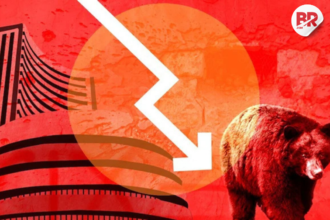
The Indian rupee’s reaction to the recent drop in the U.S. dollar has left bankers scratching their heads. While most Asian currencies are inching higher against the greenback, the rupee remains around 85.61 per dollar.
In May so far, the rupee has actually weakened by about 1%, while neighbors like the Korean won have gained 3.6%, and the offshore Chinese yuan is up around 1%. This divergence raises the obvious question: why is the rupee lagging?

If you’re planning a trip abroad, paying for imports, or watching your investments, the rupee’s sluggishness means the costs won’t drop as much as you might expect from a weaker dollar. Simply put, your money might not stretch as far as it does for people in other Asian countries right now.
The Story Behind the Scene
Experts point to one main culprit: persistent outflows of dollars from India. Foreign portfolio investors have been pulling money out of Indian equities, possibly redirecting funds to Chinese markets. This movement keeps pressure on the rupee, preventing it from rising with its peers.
Apurva Swarup, vice president at Shinhan Bank India, explains that once these outflows ease up, the rupee should get some appreciation. But until then, it’s a waiting game.
Meanwhile, a senior treasury official at a bank noted that there’s no immediate economic crisis or red flags on India’s macro front. Instead, the rupee’s movement looks like it’s driven purely by market flows—money in, money out.
Also Read Trump Announces $175 Billion ‘Golden Dome’ Missile Defense Plan for the U.S.
Why Not Buy the Rupee?
One interesting point is that key support levels like 85.40 and 85.20 have held firm. Traders say this has reduced enthusiasm for “going long” on the rupee—meaning fewer bets that the rupee will strengthen soon. This cautious stance adds to the currency’s inertia.
What to Watch Next?
Looking ahead, the rupee is expected to stay in a range without big moves. However, traders will watch the progress of trade talks between India and the U.S. closely. Positive developments could encourage foreign investors to return, boosting the rupee.
At the same time, the dollar itself is feeling bearish. Concerns over U.S. fiscal health and unclear trade policies are weighing down the greenback. The dollar index dropped 0.3% to a two-week low of 99.6, reflecting fading confidence in U.S. economic management, according to MUFG Bank.
Here’s the kicker: the rupee is playing a stubborn game of “catch me if you can,” refusing to follow the dollar’s downward slide.
While the rest of Asia is warming up to a cheaper greenback, the rupee prefers to stay cool and steady.
For now, investors and everyday Indians alike will have to watch and wait for clearer signals before the rupee joins the party.
Also Read Japan’s Exports to the U.S. Drop 2% in April Due to Trump’s Tariffs












